-
 Bitcoin
Bitcoin $106,731.2224
-1.05% -
 Ethereum
Ethereum $2,444.9804
-1.20% -
 Tether USDt
Tether USDt $1.0003
0.01% -
 XRP
XRP $2.1882
0.09% -
 BNB
BNB $651.1435
-0.61% -
 Solana
Solana $148.3252
-2.09% -
 USDC
USDC $1.0000
0.01% -
 TRON
TRON $0.2787
0.55% -
 Dogecoin
Dogecoin $0.1598
-3.16% -
 Cardano
Cardano $0.5520
-2.43% -
 Hyperliquid
Hyperliquid $39.0960
-2.64% -
 Bitcoin Cash
Bitcoin Cash $516.9519
2.98% -
 Sui
Sui $2.7011
-2.95% -
 Chainlink
Chainlink $13.0582
-1.71% -
 UNUS SED LEO
UNUS SED LEO $8.9250
-2.53% -
 Stellar
Stellar $0.2359
-0.18% -
 Avalanche
Avalanche $17.3856
-3.73% -
 Toncoin
Toncoin $2.8095
-3.56% -
 Shiba Inu
Shiba Inu $0.0...01121
-1.95% -
 Litecoin
Litecoin $85.2795
-0.85% -
 Hedera
Hedera $0.1471
-2.15% -
 Monero
Monero $319.8004
1.12% -
 Dai
Dai $1.0001
0.01% -
 Ethena USDe
Ethena USDe $1.0001
0.02% -
 Bitget Token
Bitget Token $4.5344
-1.07% -
 Polkadot
Polkadot $3.3224
-2.96% -
 Uniswap
Uniswap $6.9697
-2.75% -
 Aave
Aave $266.1658
-2.25% -
 Pepe
Pepe $0.0...09414
-3.41% -
 Pi
Pi $0.4913
-3.29%
How to find the transaction hash (TxID) in Trust Wallet?
In Trust Wallet, the transaction hash (TxID) is a unique code used to track and verify blockchain transactions, found in the transaction details screen for each transfer.
Jul 01, 2025 at 09:35 pm

Understanding the Transaction Hash (TxID) in Trust Wallet
The transaction hash, commonly referred to as TxID, is a unique identifier assigned to every blockchain transaction. It allows users to track and verify transactions across various blockchain networks. In Trust Wallet, a popular mobile wallet for managing cryptocurrencies, locating this TxID is essential for confirming transfers, resolving disputes, or auditing your transaction history.
Each TxID is a long alphanumeric string that acts like a receipt for a blockchain transaction. Being able to locate it within Trust Wallet gives you transparency and control over your digital asset movements.
Navigating the Trust Wallet Interface
Before diving into how to find the transaction hash, it's important to understand how Trust Wallet organizes transaction data. Upon opening the app, you'll see a list of supported blockchains, including Ethereum, Binance Smart Chain, Bitcoin, and others. Each blockchain has its own set of transactions associated with your wallet address.
To access transaction details:
- Open the Trust Wallet application on your mobile device
- Select the blockchain network where the transaction occurred (e.g., Ethereum or BSC)
- Tap on the token or coin involved in the transaction
- You’ll be directed to a screen showing all recent transactions for that particular asset
Navigating through these screens helps you isolate the specific transaction you want to investigate.
Locating the Transaction Hash in the Transaction Details
Once you've selected a transaction from the list, you'll enter the transaction detail page. This screen contains valuable information such as the amount sent or received, timestamps, gas fees, and most importantly, the transaction hash (TxID).
Here’s how to view it:
- Tap on any transaction entry from the transaction list
- Scroll down to find the Transaction ID section
- The TxID will appear as a long hexadecimal code starting with “0x” for Ethereum-based transactions
- For Bitcoin or other non-EVM chains, the format may differ slightly but remains a unique identifier
This hash can be copied directly from the app by tapping the copy icon next to the TxID field. It can then be pasted into a blockchain explorer for further verification.
Using the Transaction Hash with Blockchain Explorers
After retrieving the TxID, you might want to verify the transaction using a blockchain explorer. Depending on which network your transaction was made on, you should use the corresponding explorer.
Examples include:
- Ethereum: Etherscan (etherscan.io)
- Binance Smart Chain: BscScan (bscscan.com)
- Bitcoin: Blockchair (blockchair.com) or similar
Steps to verify:
- Open a browser and navigate to the appropriate blockchain explorer
- Paste the TxID into the search bar
- Press Enter to load the transaction details
This step confirms whether the transaction has been successfully processed and how many confirmations it has received.
Sharing or Using the Transaction Hash for Support
There are situations where you may need to provide the TxID to customer support or another party to resolve issues related to fund transfers, failed transactions, or incorrect addresses. Having the TxID ready makes the troubleshooting process faster and more efficient.
To share the TxID:
- Copy the hash from the transaction details screen in Trust Wallet
- Paste it into an email, chat message, or support ticket
- Make sure the recipient knows which network the transaction belongs to (e.g., Ethereum, BSC)
Providing accurate and complete transaction details ensures faster resolution when dealing with third-party services.
Frequently Asked Questions
1. Can I find the transaction hash if the transfer failed?
Yes, even failed transactions generate a TxID. You can still find it in the transaction details within Trust Wallet. The failure status will also be visible when you check the transaction on a blockchain explorer.
2. Why does my transaction have multiple hashes?
Some transactions, especially those involving smart contracts or multi-token transfers, may generate multiple TxIDs. However, each individual blockchain transaction will have only one unique TxID.
3. Is the transaction hash the same as the wallet address?
No, they are different. A wallet address identifies your account on the blockchain, while a transaction hash (TxID) uniquely identifies a specific transaction.
4. How long does it take for a TxID to appear after sending funds?
The TxID appears immediately in Trust Wallet once the transaction is broadcast to the network. However, confirmation time varies depending on network congestion and gas fees paid.
Disclaimer:info@kdj.com
The information provided is not trading advice. kdj.com does not assume any responsibility for any investments made based on the information provided in this article. Cryptocurrencies are highly volatile and it is highly recommended that you invest with caution after thorough research!
If you believe that the content used on this website infringes your copyright, please contact us immediately (info@kdj.com) and we will delete it promptly.
- Powell, Stablecoin Regulation, and Circle's Bold Move: A New York Minute on Crypto's Future
- 2025-07-02 02:30:12
- Ethereum Price, Tom Lee, and Bitcoin: A New Era for Crypto?
- 2025-07-02 02:30:12
- Hoskinson, Ripple, Cardano DeFi: A New Era of Collaboration?
- 2025-07-02 02:35:12
- BlockDAG, ALGO, and the Crypto Trends Shaping 2025
- 2025-07-02 01:50:12
- Cold Wallet, Token, Gains: Is CWT the Smartest Crypto Move?
- 2025-07-02 01:10:12
- Pi Coin's Rocky Ride: Support Levels, Recovery Timeline, and What the Experts Are Saying
- 2025-07-02 01:10:12
Related knowledge
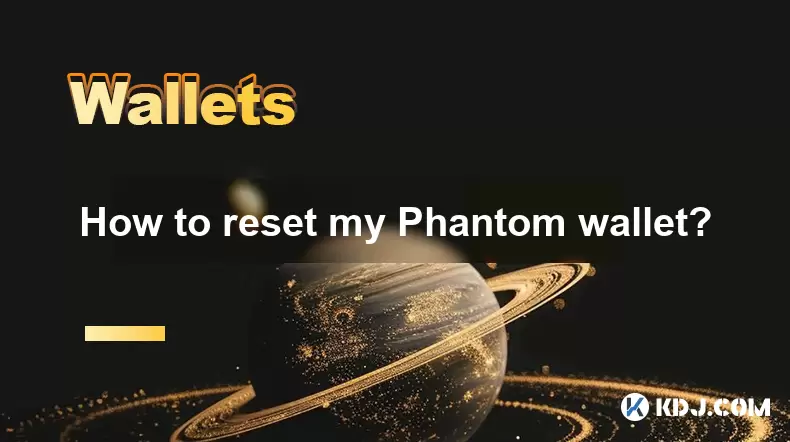
How to reset my Phantom wallet?
Jul 02,2025 at 12:36am
Understanding the Need for Resetting Your Phantom WalletIf you're using a Phantom wallet, you may encounter situations where resetting your wallet becomes necessary. This could be due to forgotten passwords, seed phrase issues, or account corruption. Phantom is a non-custodial wallet primarily used for interacting with the Solana blockchain, and it stor...
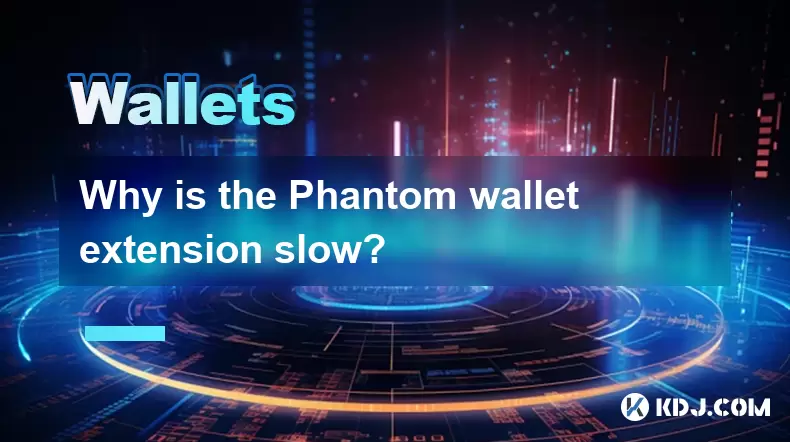
Why is the Phantom wallet extension slow?
Jul 02,2025 at 04:15am
Phantom Wallet Extension: Why Is It Slow?Phantom wallet is a widely used browser extension for interacting with decentralized applications (dApps) on the Solana blockchain. Despite its popularity, some users report that the Phantom wallet extension runs slowly at times. This article delves into potential reasons behind this performance issue and provide...
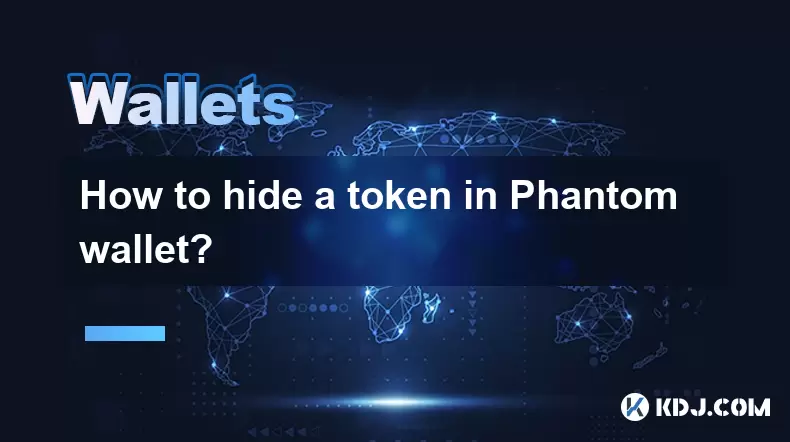
How to hide a token in Phantom wallet?
Jul 01,2025 at 05:49pm
Understanding the Phantom Wallet InterfacePhantom wallet is a popular non-custodial wallet used primarily for interacting with the Solana blockchain. It allows users to store, send, receive, and manage various tokens, including both fungible and non-fungible tokens (NFTs). Before attempting to hide a token, it's essential to understand how the wallet in...
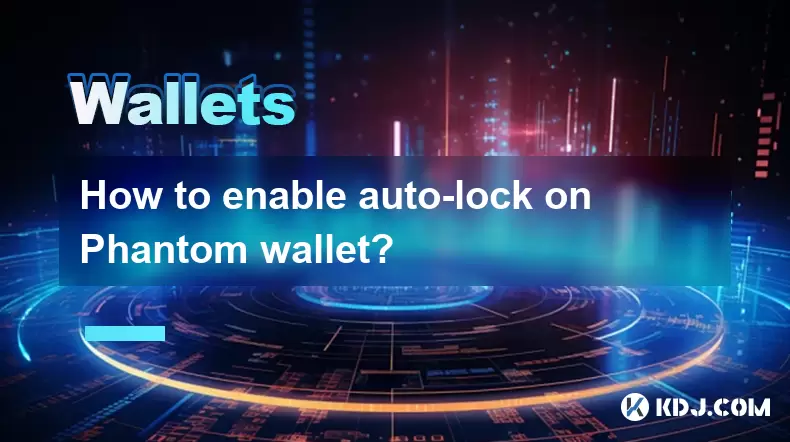
How to enable auto-lock on Phantom wallet?
Jul 01,2025 at 04:01pm
What is Auto-Lock in Phantom Wallet?Phantom wallet is a popular non-custodial cryptocurrency wallet used primarily for interacting with the Solana blockchain. One of its security features includes the ability to set an auto-lock timer, which ensures that the wallet locks itself automatically after a period of inactivity. Auto-lock enhances security by p...
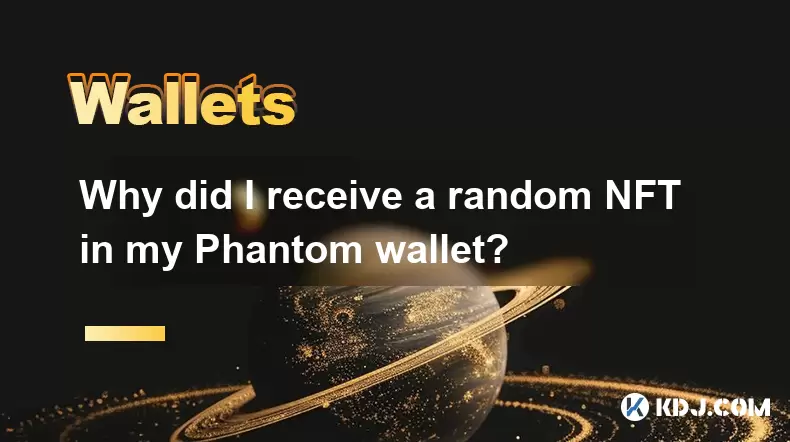
Why did I receive a random NFT in my Phantom wallet?
Jul 01,2025 at 09:00pm
Receiving an Unexpected NFT in Your Phantom WalletIf you've recently opened your Phantom wallet and noticed an unfamiliar NFT appearing in your collection, you're not alone. Many users have reported receiving random or unsolicited non-fungible tokens, often without any prior interaction with the project or sender. This phenomenon has become increasingly...
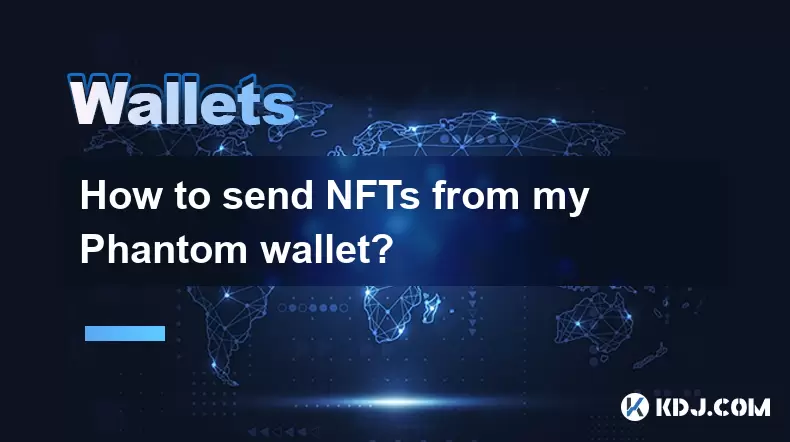
How to send NFTs from my Phantom wallet?
Jul 02,2025 at 03:15am
What is Phantom Wallet and Why Use It for NFT Transfers?Phantom wallet is a non-custodial cryptocurrency wallet primarily used for interacting with the Solana blockchain. It supports both tokens and NFTs, making it a popular choice among users who engage in decentralized finance (DeFi) or digital collectibles. The interface is user-friendly, allowing ev...

How to reset my Phantom wallet?
Jul 02,2025 at 12:36am
Understanding the Need for Resetting Your Phantom WalletIf you're using a Phantom wallet, you may encounter situations where resetting your wallet becomes necessary. This could be due to forgotten passwords, seed phrase issues, or account corruption. Phantom is a non-custodial wallet primarily used for interacting with the Solana blockchain, and it stor...

Why is the Phantom wallet extension slow?
Jul 02,2025 at 04:15am
Phantom Wallet Extension: Why Is It Slow?Phantom wallet is a widely used browser extension for interacting with decentralized applications (dApps) on the Solana blockchain. Despite its popularity, some users report that the Phantom wallet extension runs slowly at times. This article delves into potential reasons behind this performance issue and provide...

How to hide a token in Phantom wallet?
Jul 01,2025 at 05:49pm
Understanding the Phantom Wallet InterfacePhantom wallet is a popular non-custodial wallet used primarily for interacting with the Solana blockchain. It allows users to store, send, receive, and manage various tokens, including both fungible and non-fungible tokens (NFTs). Before attempting to hide a token, it's essential to understand how the wallet in...

How to enable auto-lock on Phantom wallet?
Jul 01,2025 at 04:01pm
What is Auto-Lock in Phantom Wallet?Phantom wallet is a popular non-custodial cryptocurrency wallet used primarily for interacting with the Solana blockchain. One of its security features includes the ability to set an auto-lock timer, which ensures that the wallet locks itself automatically after a period of inactivity. Auto-lock enhances security by p...

Why did I receive a random NFT in my Phantom wallet?
Jul 01,2025 at 09:00pm
Receiving an Unexpected NFT in Your Phantom WalletIf you've recently opened your Phantom wallet and noticed an unfamiliar NFT appearing in your collection, you're not alone. Many users have reported receiving random or unsolicited non-fungible tokens, often without any prior interaction with the project or sender. This phenomenon has become increasingly...

How to send NFTs from my Phantom wallet?
Jul 02,2025 at 03:15am
What is Phantom Wallet and Why Use It for NFT Transfers?Phantom wallet is a non-custodial cryptocurrency wallet primarily used for interacting with the Solana blockchain. It supports both tokens and NFTs, making it a popular choice among users who engage in decentralized finance (DeFi) or digital collectibles. The interface is user-friendly, allowing ev...
See all articles

























































































